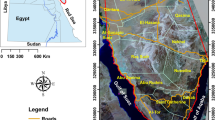Abstract
Flood hazard increasingly threatens human communities that occupy floodplains. Economic planning of control measures relies on identification and prioritization of the flood source areas in the watershed draining to the threatened reach. Distribution of flood control activities in proportion to the priority of flood source areas can reduce excessive costs and increase flood control efficiency. In this research, a distributed Clark-based rainfall-runoff model in conjunction with a hydrologic routing model was calibrated and validated in the watershed of interest. Then, a 2 * 2 km2 discretization scheme was implemented to represent some 200 pixels for flood source identification. The unit flood response (UFR) approach was then carried out at pixel scale. This step resulted in, for the first time, a distributed flood index map, which identifies and ranks pixels with high impact on the flood regime of the flood-threatened reach. The iso-flood severity map can be also extracted in a contour format.










Similar content being viewed by others
References
Abbott MB, Refsgaard JC (1996) Construction, calibration and validation of hydrological models. In: Distributed hydrological modeling. Edition, Hardbound. ISBN 0792340426, pp 41–55
Ayral PA, Sauvagnargues-Lesage S, Gay S, Bressand F (2007) Forecasting flashfloods with an operation model. In: Flood risk management in Europe, pp 335–352
Braud I, Fernandez P, Bouraoui F (1998) Study of the rainfall-runoff process in the Andes region using a continuous distributed model. J Hydrol 216:155–171. doi:10.1016/S0022-1694(98)00292-3
Buchele B, Kreibich H, Kron A, Thieken A, Ihringer J, Oberle P, Merz B, Nestmann F (2006) Flood-risk mapping: contributions towards an enhanced assessment of extreme events and associated risks. Nat Hazards Earth Syst Sci 6:485–503
Foody GM, Ghoneim EM, Arnell NW (2004) Predicting locations sensitive to flash flooding in an arid environment. J Hydrol 292(1–4):48–58. doi:10.1016/j.jhydrol.2003.12.045
Garrote L, Bras RL (1994) Distributed model for real time flood forecasting using digital elevation model. J Hydrol 167:279–306. doi:10.1016/0022-1694(94)02592-Y
Jain SK, Storm B, Bathurst JC, Refsgaard JC, Singh RD (1992) Application of the SHE to catchments in India—part 2: field experiments and simulation studies on the Kolar sub catchment of the Narmada river. J Hydrol 140:25–47
Kull DW, Feldman AD (1998) Evolution of Clark’s unit graph method to spatially distributed runoff. J Hydrol Eng ASCE 3((1):9–19. doi:10.1061/(ASCE)1084-0699
Merz B, Bardossy A (1996) Effects of spatial variability on the rainfall-runoff process in a small loess catchment. J Hydrol 212–213:304–317
Paudel M, Nelson EJ, Scharffenberg W (2009) Comparison of lumped and quasi-distributed clark runoff models using the SCS curve number equation. J Hydrol Eng ASCE. doi:10.1061/ASCE_HE.1943-5584.0000100
Plate EJ (2002) Flood risk and flood management. J Hydrol 267:2–11. doi:10.1016/S0022-1694(02)00135-X
Refsgaard JC, Seth SM, Bathurst JC, Erlich M, Storm B, Jorgensen GH, Chandra S (1992) Application of the SHE to catchment in India—part 1: general results. J Hydrol 140:1–23
Refsgaard A, Refsgaard JC, Jorgensen GH, Thomsen R, Sondergaard V (1994) A hydrological modeling system for joint analyses of regional groundwater resources and local contaminant transport. Unpublished note. Danish Hydraulic Institute, p 28
Saghafian B, Khosroshahi M (2005) Unit response approach for priority determination of flood source areas. J Hydrol Eng ASCE 10(4):270–277. doi:10.1061/(ASCE)1084-0699
Tung YK (2002) Risk-based design of flood defense systems. In: Wu Y et al (eds) Flood defence 2002. Science Press Ltd, New York, pp 71–81. ISBN 1-880132-54-0
Author information
Authors and Affiliations
Corresponding author
Rights and permissions
About this article
Cite this article
Saghafian, B., Ghermezcheshmeh, B. & Kheirkhah, M.M. Iso-flood severity mapping: a new tool for distributed flood source identification. Nat Hazards 55, 557–570 (2010). https://doi.org/10.1007/s11069-010-9547-0
Received:
Accepted:
Published:
Issue Date:
DOI: https://doi.org/10.1007/s11069-010-9547-0




